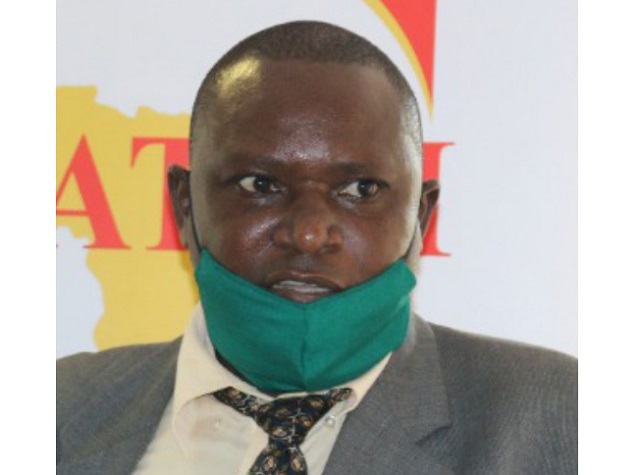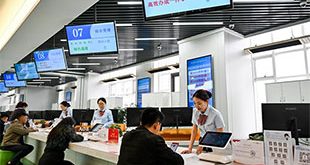
Experts outline ways in which partner states can benefit from the bloc
| THE INDEPENDENT | Before COVID-19 hit world economies two years ago, there was optimism that Africa’s flagship project of the African Union’s Agenda 2063, the African Continental Free Trade Area (AfCFTA) would quickly reshape markets across the region.
One year down the road, trading under this bloc has largely been insignificant and there are no concrete figures to determine the journey made so far.
But some experts believe it is not too late now that most economies have reopened fully to conduct trade after lockdown disruptions.
Experts gathering at a meeting in Kampala on Feb.28 organised by Southern and Eastern Africa Trade Information and Negotiations Institute (SEATINI) Uganda, shared ideas on how East African Community member states can prepare to benefit from this arrangement.
Jane Nalunga, the executive director at SEATINI said, growing individual economies is okay, but working together through organised trading blocs is much better to achieve socio-economic transformation of the people.
Nalunga said, Africa should practically unite and implement the AfCFTA agenda for it to make steps forward and create opportunities similar to those in other developed continents.
AfCFTA creates a market of 1.2bn people with a combined GDP of US$3tn. Experts in this area believe that its tangible implementation would reshape economies across the region and enhance output in key sectors, diversify exports, accelerate growth, and attract foreign direct investment.
At the SEATINI meeting, a policy paper titled ‘EAC negotiations of trade agreements with third parties’ was presented by Isaac Shinyekwa, a senior research fellow at the Makerere University based Economic Research Centre.
He outlined ways in which EAC can tap AfCFTA opportunities.
Sinyekwa, who heads the trade and regional integration department at EPRC said, EAC countries must build both national and regional institutional, legal and expert capacities to implement the negotiated agreements; provide a comprehensive exposé of the existing relationships and cooperation arrangements between the EAC partner states and the different third parties which differ in scope, sector, priority, strategy and approach, with the intent to assess their relevance in the prospective trade negotiations.
He also said, EAC member states should develop frameworks in World Trade Organisation-plus areas to be able to negotiate effectively given that these have become part of the multilateral systems; create an environment conducive for small and medium enterprises and firms to access information and cheap financing in order to level the playing field against well supported third party SMEs and firms.
Countries in the EAC should also conduct a detailed analysis on the supply capacity of the community relative to potential gains in respect of the regional productive capacities across and among sectors to inform the strategic decision to be made.
Other considerations are; assess the legal, institutional, regulatory and policy frameworks regarding supply side constraints and incapacities with the aim of addressing them where they are missing and implementing them where they exist; focus on upgrading and improving the national and regional regulatory frameworks to meet the complex regulatory measures in third party countries/regions to access their markets; strategically design rules of origin with the intent to foster industrialization in specific sectors in the region and ensure that EAC companies meaningfully participate in supply chains involving third party companies.
EAC member countries should tailor the negotiations to a value and supply chain approach as an option where the negotiations are based on conditions that apply from the farm all the way to entry into the consumer market of the wider trading bloc.
In addition, the EAC partner states should strategically use government procurement to spur manufacturing capacity of companies, identify and address impediments to market access where applicable and include provisions in the FTA negotiations to mitigate them in the future.
The other suggestions are, develop and negotiate frameworks that minimise the negative effects of non-tariff barriers on market access in FTA with third parties, adopt an appropriate tariff band structure that is relevant to growth, industrialisation and development aspirations/agenda of the EAC region.
EAC member states should also sstrengthen the EAC dispute settlement mechanism to handle investor disputes and develop an EAC model law on trade remedies that can be used to design national laws for partner states to take remedial and protective actions.
Chris Opura, the senior marketing officer at the ministry of trade industry and cooperatives said, the government of Uganda will work closely with the private sector to fill gaps in quality, production volumes, credit access, information access and more to ensure that the country and its people benefit.
The AfCFTA will be the largest free trade area since the formation of the World Trade Organization in terms of participating countries, given Africa’s current population of 1.2 billion people, which is expected to grow to 2.5 billion by 2050. It is expected to increase trade among African countries which currently ranges between 15-18%.
****
 The Independent Uganda: You get the Truth we Pay the Price
The Independent Uganda: You get the Truth we Pay the Price



